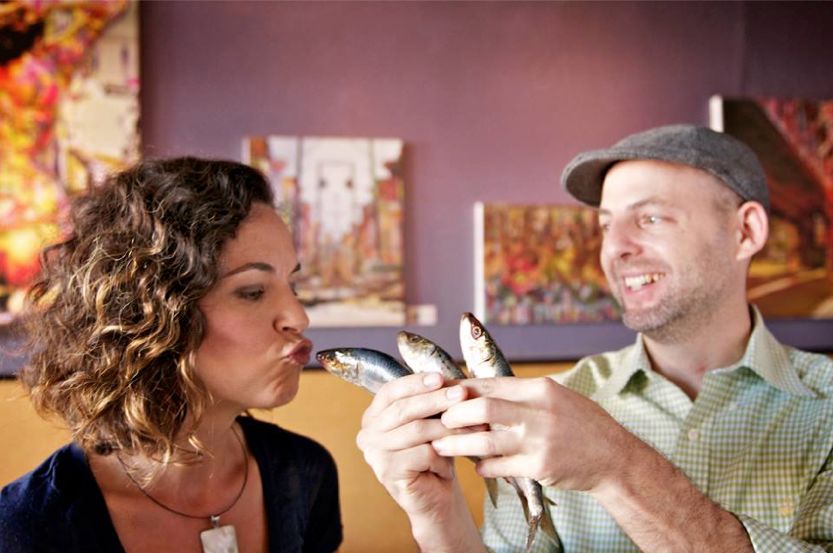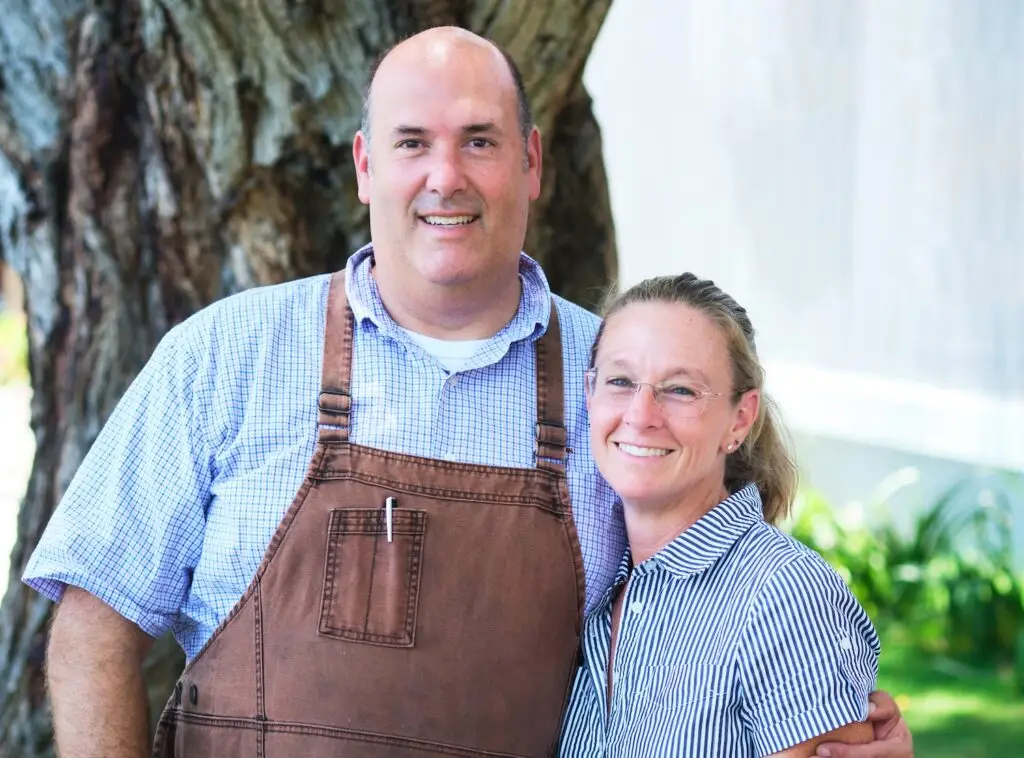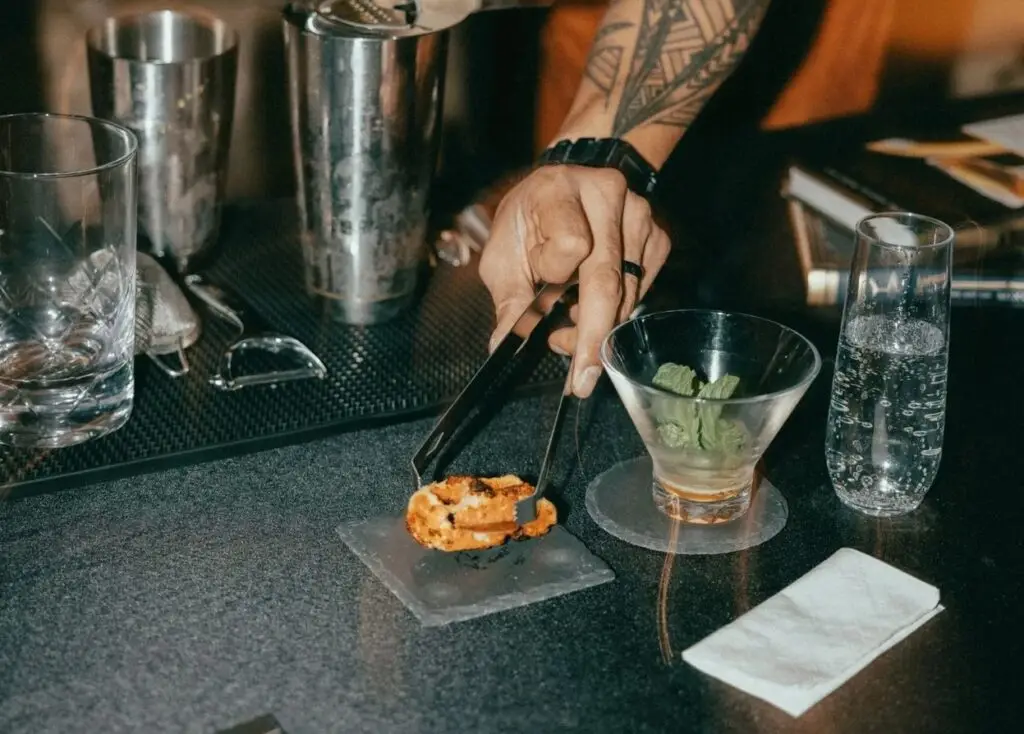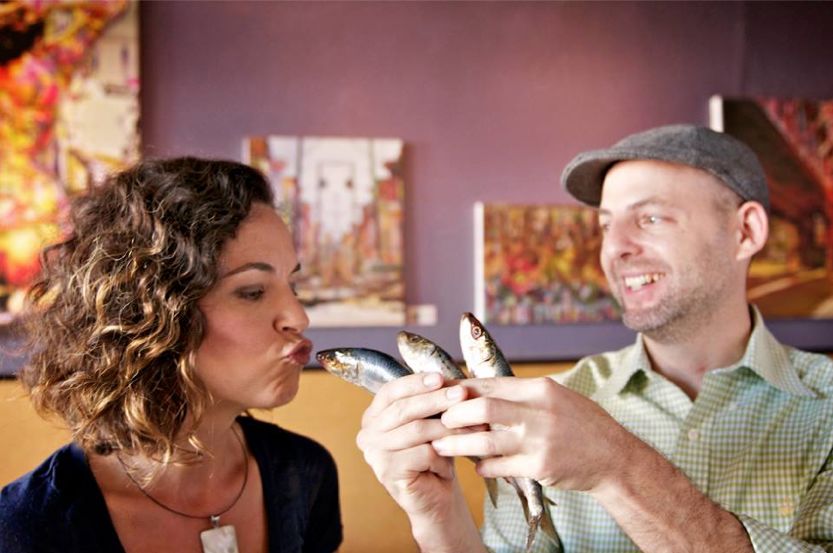Two days ago, we announced that Sea Rocket Bistro—a hardline local, sustainable seafood bistro in North Park—was closing its doors after five and a half years. It’s not alone. North Park’s local food trailblazer The Linkery recently shuttered. The owner of The Local Habit in Hillcrest sold his operation, too.
It’s raised a question: Just how hard is it to do a local, sustainable restaurant?
Fans of the Sea Rocket loved them for their principles as much as their food. Every restaurateur talks about being local and sustainable, but very few stick to their guns when they take a look at the real costs in doing so. Sea Rocket was militant about their ethics, which ultimately lead to their closing.
Partner Elena Rivellino gives a rare insiders look at how the numbers play out. This analysis doesn’t take into account the subjective quality of the finished product (some locals absolutely loved their grilled sardines and live local uni, others weren’t so impressed). Nor does it consider real estate (Sea Rocket is located in a sort of no-man’s land between North Park and South Park). But it does give a rare glimpse at the sheer costs of trying to be a progressive, local seafood restaurant.
Sea Rocket’s final meal will be served on Dec. 8. Consider the following the next time you complain about the menu price of local lobster.
Is sustainability a sustainable restaurant model?
Unfortunately ours wasn’t. Or at least we weren’t able to make it so. Places like Chez Panisse have worked for years. Who knows if it’s simply a market/demand recognition, real estate, being able to charge more and serve less volume of food, operating more hours than we did (which we tried, but couldn’t get going enough to make it worth continuing). It’s probably a combination of it all and maybe San Diego just can’t support that combination of a place quite yet. I feel our type of restaurant has been quite successful elsewhere. Hopefully it’s all just part of a natural evolutionary/devolutionary process.
Let’s talk operational costs—which I’m sure was a big factor in Sea Rocket closing.
The cost of doing business for a locally sourced, sustainable-only foods restaurant are SOO high. You do have to pay for quality, but we just felt that we couldn’t charge high-end, fine-dining prices in a casual neighborhood bistro in North Park, so we just didn’t get the markup we needed on a lot of our menu items. We wanted to be reasonably priced to best serve the area, which means we probably should have picked a different kind of food to serve, because seafood is notoriously expensive compared to any other food you could focus on. Maybe that explains why there are so many pizza/salad/sub/burger places.
Industry standard says, to be profitable, restaurants must keep their food costs (what they pay wholesale for food supplies) between 25-30%…
First you kind of have to have an understanding of markups, which can vary between businesses. For example, those with a full liquor license can sell their food cheaper because they have a way bigger markup on the alcohol, which is where they typically make their money—the food almost being a wash or convenience. Any restaurant owner with decent food will tell you that they wouldn’t have made it without the hard liquor advantage—or an incredibly high volume of business, which is hard to sustain.
You sell your live local uni for $18. How much should you have been charging to reach a sustainable profit margin?
We should be charging like $25 per urchin. But we only charge $18 because we’re pretty sure that nobody (except maybe international travelers from Japan) would ever buy them at that price! A long time ago we charged $13 (also not appropriately priced) but then the cost went up a year or two later and we didn’t want to just stop serving them, so we raised the price by $5 to compensate. This is actually why we did entirely stop serving certain things- like local spiny lobster when it’s in season.
You had to stop serving local lobster?
We have not served local spiny lobster in two years, which is very, very sad. The first year, we bought and served a lobster risotto all winter. It was our highest-priced entree, but people recognized the value and bought it happily. The next year, the price went up, so we made a lobster dip instead, which utilized less meat per order so that we could charge less and still sell it. The next year, the price was like $15-$18/lb WHOLESALE or something like that. (I forget the exact price.) For 1/4 of the lobster, we would have wanted/needed to charge like $20 for a plate. Who’s gonna pay $20 for a very small portion of lobster? That year, we got it just once in a while, usually getting a deal on those animals with broken claws and such, and only offered it as a special.
As we’ve heard before, local lobster is going to Asia, right?
All of the lobster gets sent to Asia where people will pay $20/lb or whatever. We as a business and diners have been priced and pushed out of the market for this seafood. It’s being shipped halfway around the world, adding to pollution, etc. while most of the west coast and other parts of this country import much cheaper, different lobster from places like Maine, or Mexico. Doesn’t make much sense, does it?
If you don’t meet the basic markup margins on food, is the restaurant necessarily doomed?
It doesn’t always lead to losing money. You try to balance out your menu with other less expensive items that you can maybe charge a little more for than you need to—to make up for those other high-cost dishes. But overall, we had to compromise on too many items, and that’s only food cost we’re talking about.
What about labor costs?
They really add up, too. We ordered ingredients from lots of different sources day to day. We needed time to juggle lots of different orders and information and emails. We couldn’t consolidate trucking/shipping charges with one bigger company. Also, we made everything from scratch in-house—dressings, sauces, spice blends, and use creative culinary techniques like sous viding, smoking, curing, etc.
So restaurateurs wanting to buy local don’t have a single supplier/distributor—which would streamline and lessen costs?
Some consolidation of distribution costs for local goods is absolutely needed in order for this business model to work. Most places, farms and other vendors, etc. now charge a fuel surcharge every single time they bring something to you, no matter how much or heavy or expensive it is. That adds to your bottom line of ingredient cost, too.
What about the bar tab?
I also was not able to keep my beverage costs at the point we were always aiming for. If we had never discounted any of our drinks, I could probably have made that goal. But the specials we ran for both food and drink cut into what tiny margin we may have otherwise had. If we could have cut out all happy hour discounts altogether while still retaining those people who would come in during that time to take advantage of them—oh wait, yeah, that wouldn’t work.
Is there a way to cheat the system?
A lot of places offer cheap prices for cheap product—rather than an actual discount on your usual amazing product, which is what we did. If we didn’t offer discounts, people will go where there are discounts. If I had only served a few craft beers or organic, small-batch wines, and then balanced out my list with a bunch of cheaper, lower quality stuff, I probably could have made it work. But that’s not what we were about, and we weren’t willing to start chipping away at our entire concept one cost at a time, which would eventually have turned it into a completely different kind of place.
In summary…
If your food costs are high but everything else isn’t, or your beverage cost is high, but everything else isn’t, or your labor cost is high, but everything else isn’t, you could probably make it work. But take high food, beverage AND labor costs and roll it all into one business, and you have no profit. (Oh, and don’t forget to budget for all of your miscellaneous expenses!). Sometimes the math just doesn’t work and you need to move onto the next problem.
For all the positive memories (and there are plenty), visit Sea Rocket’s blog at http://www.searocketbistro.com/category/blog.

Unsustainable Sustainability
PARTNER CONTENT
Gary Allard (www.garyallardphoto.com)


















